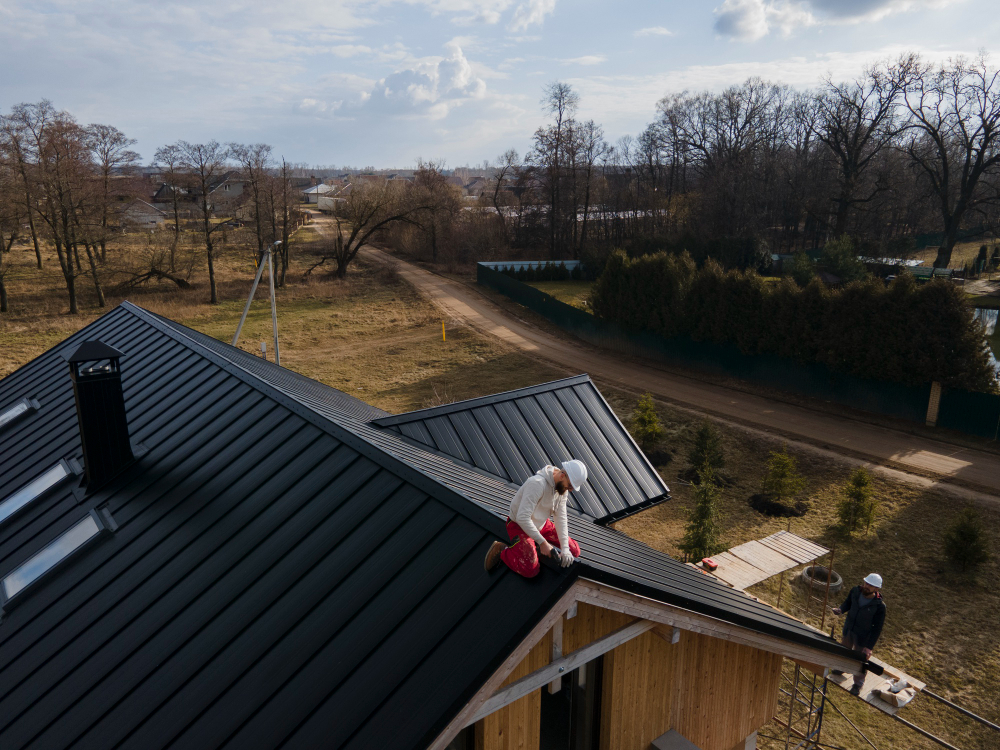When you look up at a roof, it may seem like a solid barrier against the elements, but beneath its surface, numerous issues can lie in wait, ready to compromise its integrity. Common problems include leaks, missing shingles, and granule loss, which often go unnoticed until they escalate into more significant complications. Leaks, often prompted by aging materials or poor installation, can manifest as water stains on ceilings or walls. These early signs may seem harmless, but they can quickly lead to mold issues or structural damage if left unchecked.
Moreover, missing or damaged shingles aren’t just an aesthetics issue; they expose the underlying materials to direct rain and wind, leading to further deterioration. Granule loss is another red flag that is often overlooked. The granules protect the shingles from UV rays and assist in proper drainage; their absence increases the risk of premature roof aging. Homeowners must familiarize themselves with these issues to take charge of their roof’s health proactively.
Weather Woes: How Climate Affects Your Roof’s Health
The impact of climate on roof health cannot be overstated, as years of exposure to harsh weather conditions can take a toll on even the most durable roofing materials. For instance, areas that experience strong winds, hail storms, or heavy snow must account for the potential damage these elements can wreak upon their roofs. Wind can lift and tear off shingles, while hail can cause dents and punctures, compromising your roof’s ability to shed water effectively. In contrast, roofs in sunny climates face the degrading effects of UV radiation, which can make certain materials brittle and prone to cracking.
Additionally, temperature fluctuations can lead to cyclical expansion and contraction which can weaken your roof’s structural integrity over time. Frost, rain, and subsequent thaw cycles can lead to ice dam formations that can infiltrate your home, hence the importance of understanding your regional weather patterns and their implications for your roofing system.
The Age Factor: When to Worry About Your Roof’s Lifespan
All roofs have a limited lifespan, typically ranging from 15 to 50 years depending on the type of materials used shingle roofs generally last around 20 years, while metal roofs can endure for upwards of 50. Homeowners need to be acutely aware of their roof’s age, as much of its effectiveness diminishes after a certain point. Regular inspections become increasingly vital as roofs age; they may require more frequent repairs or even a complete replacement when they exceed their life expectancy, resulting in costly leaks, mold issues, or even structural damage.
Moreover, factors such as the quality of installation, local climate, and underlying structural issues can significantly affect the lifespan of a roof. Knowing when your roof is nearing the end of its life can save homeowners from an unexpected, often substantial, financial burden. If you find yourself frequently fixing minor issues or noticing persistent leaks, it may be a sign that age-related problems are taking their toll.
Assessing Your Roof: DIY vs. Professional Inspection
The Roofer’s Checklist: What to Look for When Inspecting
Conducting a roof inspection requires a keen eye and a checklist that addresses potential trouble spots. Start by examining the shingles for curling, warping, or missing pieces. Next, inspect the flashing, particularly around chimneys and vents, where leaks can frequently develop. Look for any sagging areas, which could indicate structural issues, and note any signs of water damage in your attic, such as discoloration or mold growth. Being proactive in this initial assessment can help mitigate future damage. Documenting your findings can help track changes over time and provide valuable information if you need to consult a professional later.
DIY Evaluation Techniques: Tools and Tips for Homeowners
While hiring a professional will provide the most thorough inspection, homeowners can certainly perform a preliminary evaluation. Tools such as a ladder, flashlight, and camera can be beneficial when inspecting your roof. A digital moisture meter can also detect hidden water damage. Remember to use extreme caution when on the roof; wear proper footwear and avoid walking on wet or slippery shingles. If you’re unsure about getting on your roof, consider using a drone or binoculars to assess the exterior from a safer distance.
Tips include inspecting your roof after significant storms, keeping track of seasonal changes that may affect its condition, and being wary of any shifts in your home’s walls and ceilings, which could indicate an issue with the roof. Maintaining a regular inspection schedule at least twice a year will prepare you for any repairs or maintenance your roof might need.
When to Call in the Experts: Recognizing Red Flags
While DIY inspections are essential, certain red flags should prompt an immediate call to your roofer. If you notice persistent water stains on your walls or ceilings, dampness in your attic, or shingles that appear to be lifting or missing entirely, don’t hesitate to reach out to a professional. Additionally, if you experience significant storm damage or a major roof leak, immediate intervention is crucial to prevent secondary damage.
More subtle signs include the presence of excessive granules in your gutters or downspouts this is an indication that your shingles are deteriorating. Prioritizing timely, professional evaluations when red flags arise will not only save you money but also extend the lifespan of your roof.
Selecting the Right Roof Repair Services
Finding Quality: What to Look for in a Roofing Contractor
Choosing the right roofing contractor can seem daunting given the number of options available. Start by seeking referrals from trusted friends or online reviews. Look for licensed and insured contractors who can guarantee their work. Examine their portfolio for comparable projects and ensure they have experience working with your specific roofing material. A reliable contractor should also provide you with references of past clients to gauge their workmanship and customer service.
Don’t just settle for the lowest bid; quality workmanship often costs more upfront but can prevent substantial future expenses. Verify their reputation with local or state licensing authorities and consult with professional roofing associations to understand their track record in the industry. Ultimately, a quality contractor will offer you comprehensive service that includes thorough inspections, accurate estimates, and reliable warranties.
Price vs. Quality: Navigating Repair Estimates Wisely
Cost is undoubtedly a significant factor when considering roof repairs; however, it shouldn’t be the only factor in your decision. Obtaining multiple quotes from different contractors will provide a better understanding of the market rate for your needed repairs. Estimates should clearly outline the materials, labor, timeframe, and all potential costs involved. Beware of estimates that are significantly lower than others they may indicate subpar materials or rushed workmanship.
In contrast, a higher price doesn’t always guarantee quality. Look to see how contractors justify their estimates; customer service, detailed plans, and warranties and guarantees can all contribute to the overall value outweighing the upfront costs. Thorough communication with your contractor will enable you to understand the rationale behind each aspect of your estimate and ensure that you’re making a well-informed financial commitment.
The Importance of Reviews: How Customer Experiences Shape Your Choice
In our increasingly connected world, consumer reviews can play a pivotal role in guiding your decision when selecting roofing services. Online platforms such as Google, Yelp, and social media provide potential customers with insights into the experiences of those who have previously engaged with a contractor. Look for contractors with a high volume of positive reviews as well as an excellent response to any negative feedback. A contractor who takes the time to address concerns demonstrates professionalism and a commitment to customer satisfaction.
In addition to online reviews, consider reaching out to references provided by the contractor and ask about their experience with the entire process from initial contact and estimates to the final inspection after repairs. Understanding how a contractor operates in real-world situations will significantly shape your decision and provide peace of mind during what could be a daunting process.
Post-Repair: Ensuring Longevity and Maintenance
Aftercare Essentials: Keeping Your Roof in Top Shape
Once your roof repairs have been completed, the best way to protect your investment is through regular aftercare and maintenance. Initially, ensure that all debris and waste left from the repairs are cleared away to avoid any blockages that could lead to leaks. Check all flashing and seals used during repairs; ask your contractor about the proper care for these areas, particularly in the early days after installation or repairs, when they might still be curing or settling.
Regularly clean your gutters to prevent water backup that could lead to premature roofing issues, and consider scheduling annual professional inspections to catch emerging problems early. The money spent on maintenance is usually minor compared to the expense of substantial repairs that could ensue from a lack of attention to your roofing system.
Seasonal Checklists: Preparing Your Roof for Every Weather
Creating seasonal checklists can help you anticipate and address issues your roof may encounter throughout the year. For spring, focus on removing debris, checking for mold, and assessing any storm damage. Summer should be about checking your ventilation and inspecting for UV damage, while fall offers the opportunity to clean gutters and check for any damage caused by falling leaves or branches. In winter, be vigilant about ice dam prevention, ensuring that your roof is properly insulated and ventilated to avoid thaw and refreeze cycles that can cause water to back up under shingles.
By adhering to these seasonal checklists, homeowners can ensure that their roofs remain structurally sound and effective against the elements, thus prolonging their lifespan and maintaining peak performance.
Understanding Warranties: Maximizing the Value of Your Investment
Every roof repair or replacement service should come with a warranty that protects both the workmanship and the materials used. Understanding what the warranty covers, its duration, and the process for making a claim is essential for homeowners. Pay close attention to the fine print, as warranties can vary widely in terms of what is and isn’t covered. Many warranties require regular maintenance and inspections to remain valid; thus, it is crucial to maintain your upkeep records.
Additionally, be sure to document all repairs or modifications made to your roof, as this can assist you in any warranty claims should issues arise post-repair. A strong warranty provides not only peace of mind but also maximizes the return on investment for your roof repair services, ensuring you are well protected against unexpected problems down the road.
By following the guidance outlined in this comprehensive guide, homeowners can confidently navigate the complex world of roof repair services, ensuring that their investment remains robust for years to come. Each section offers critical insights meant to empower homeowners, making informed decisions easier and promoting the longevity of their roofs.









